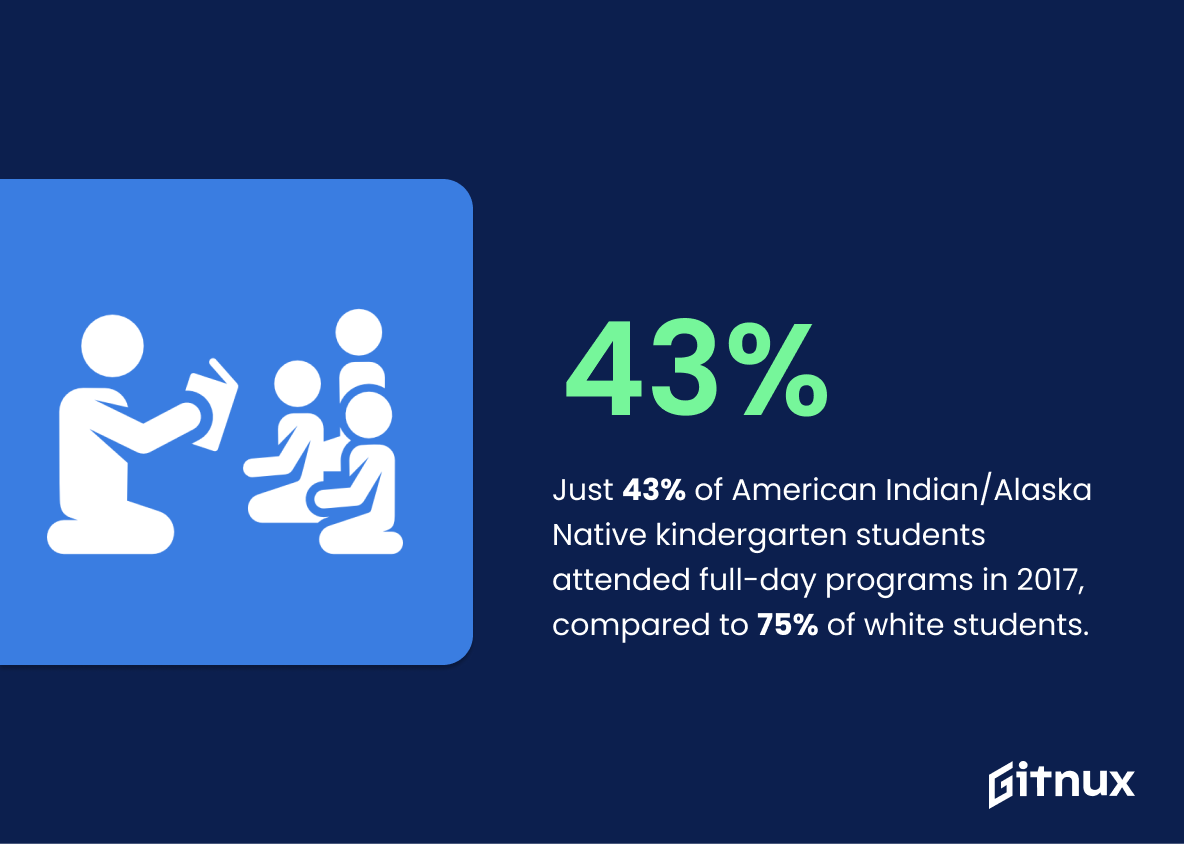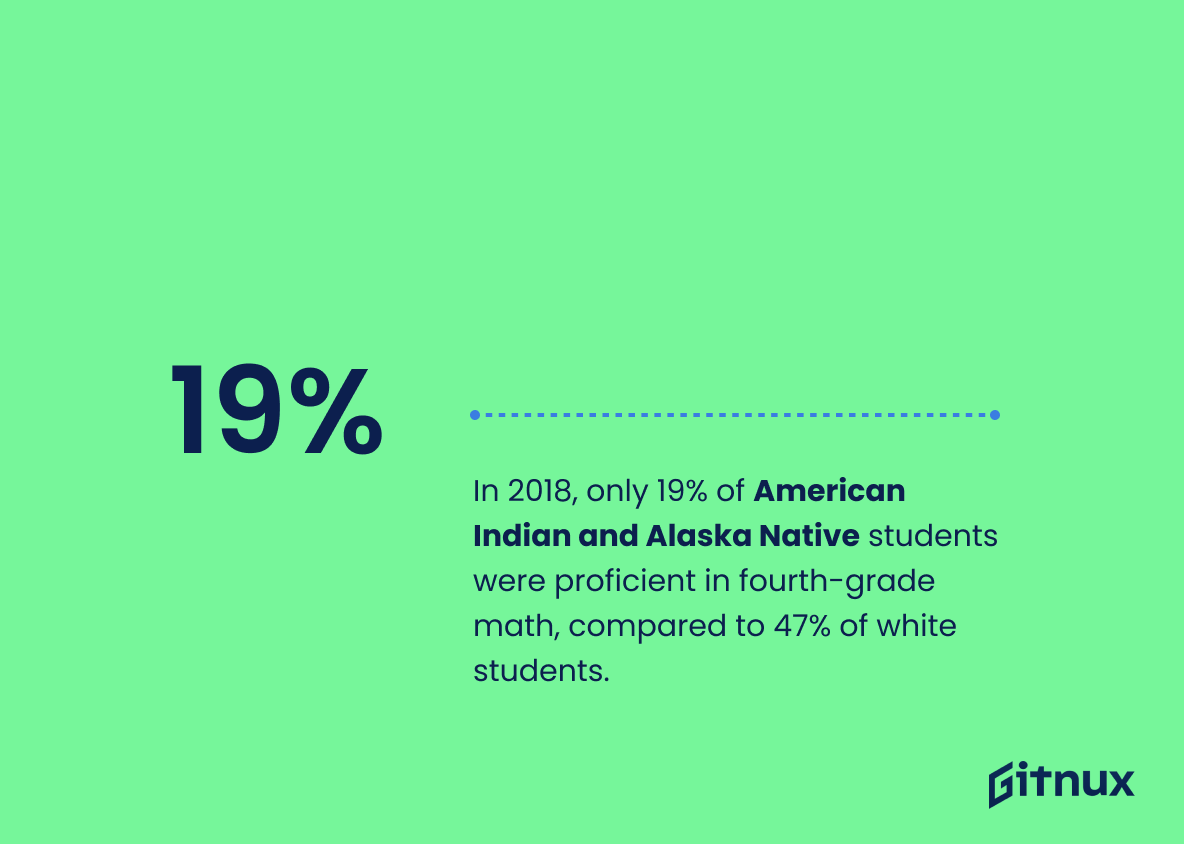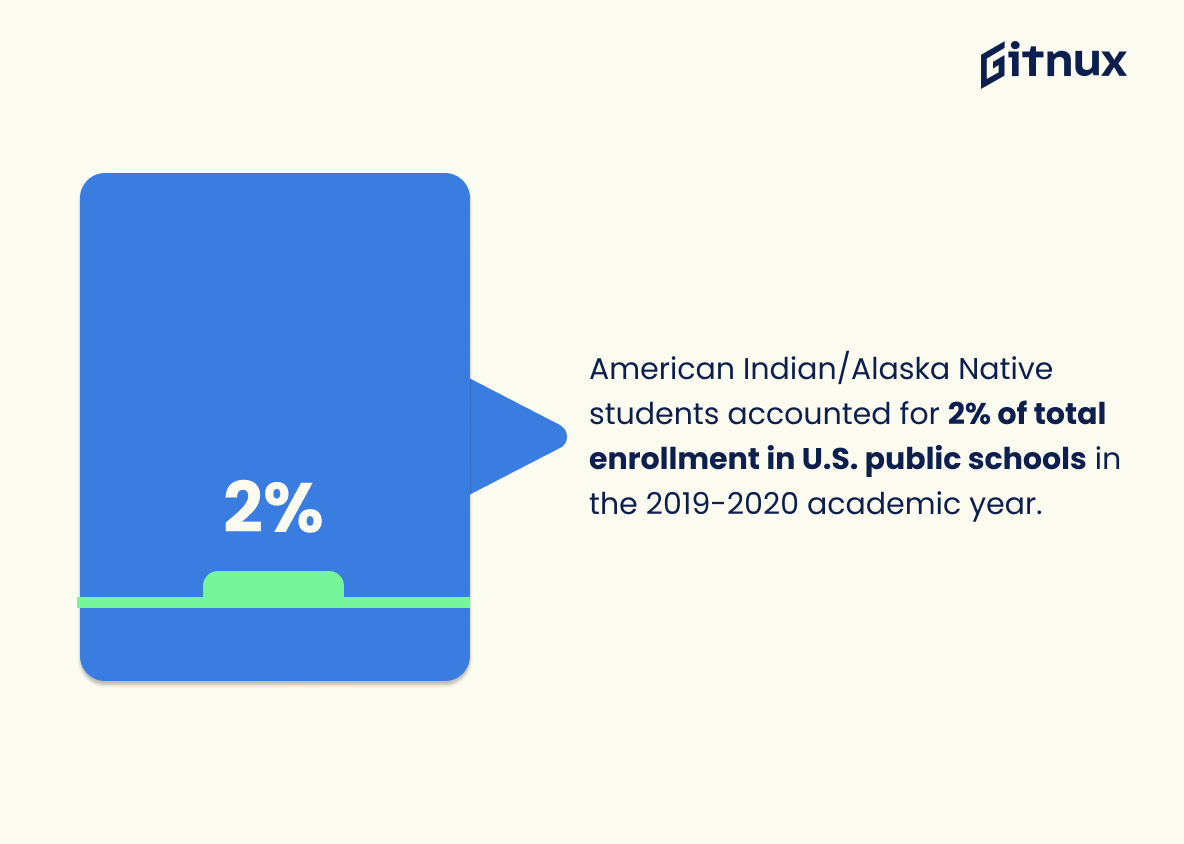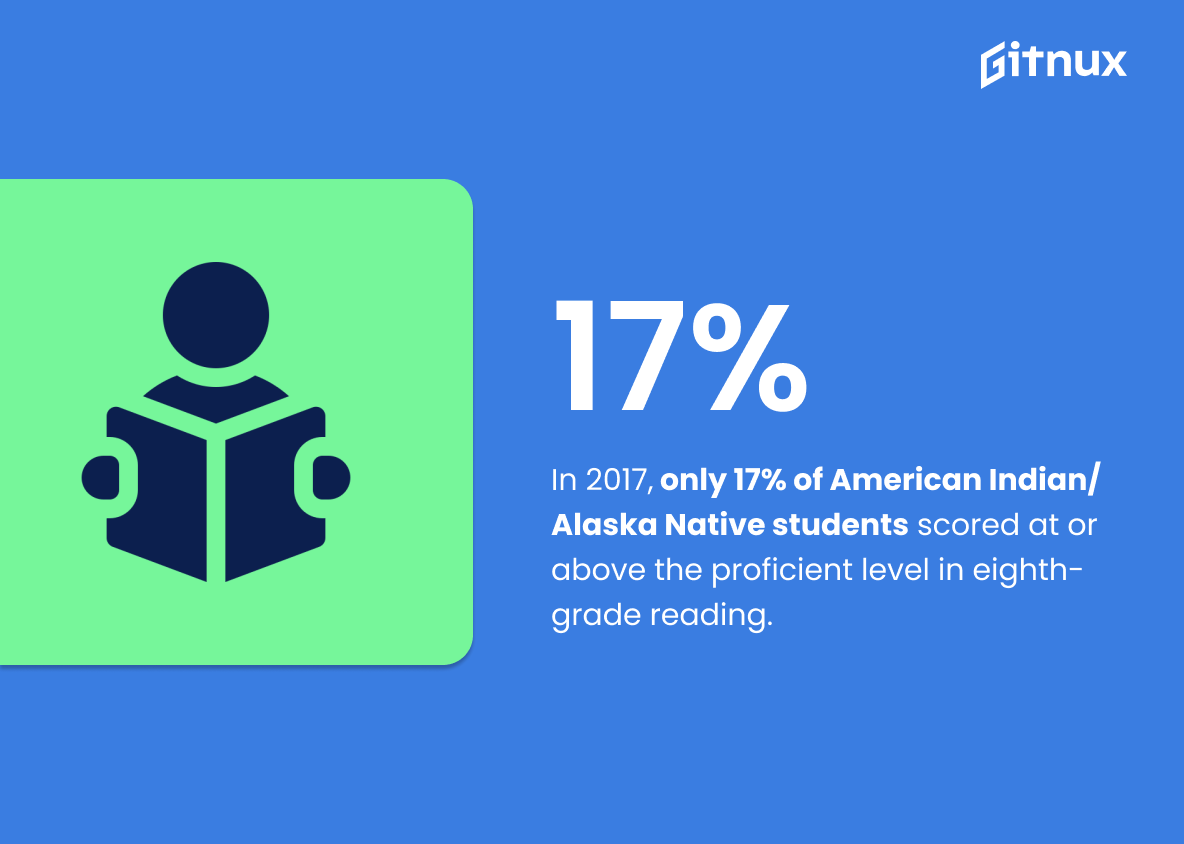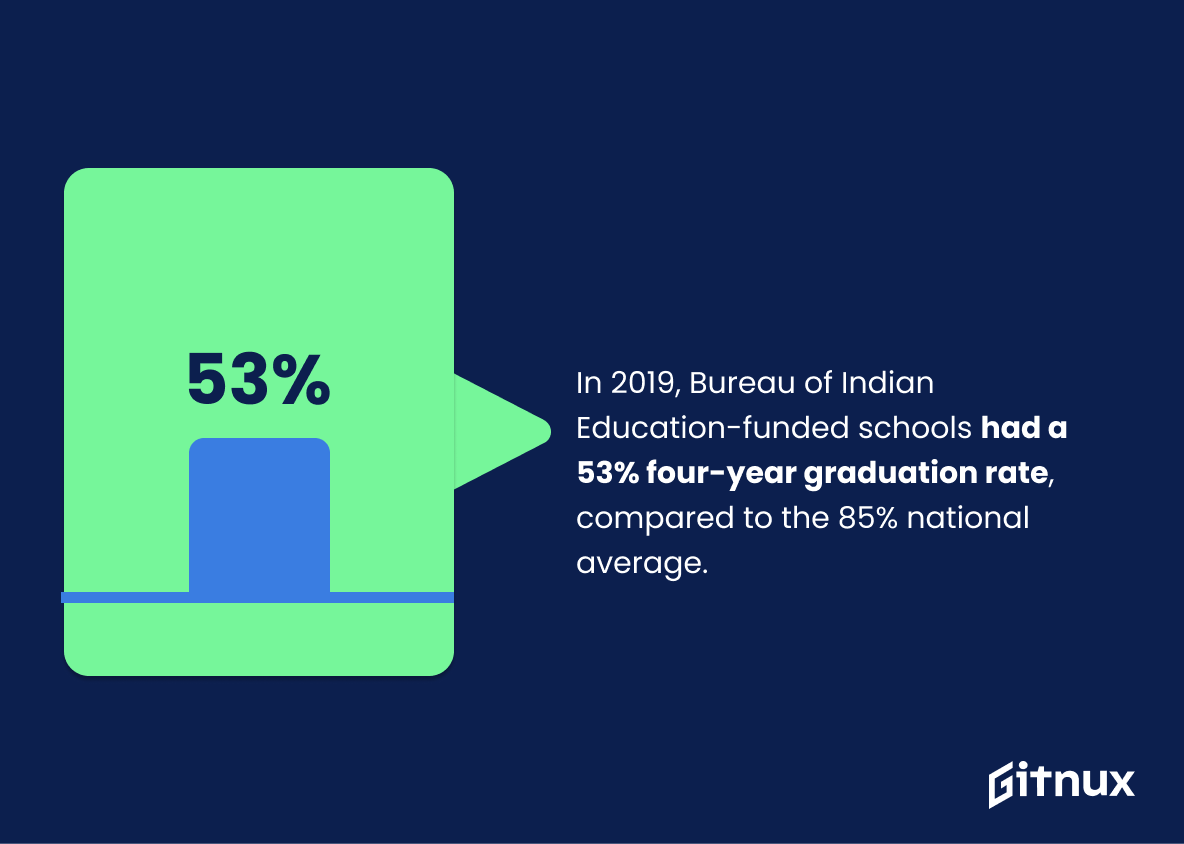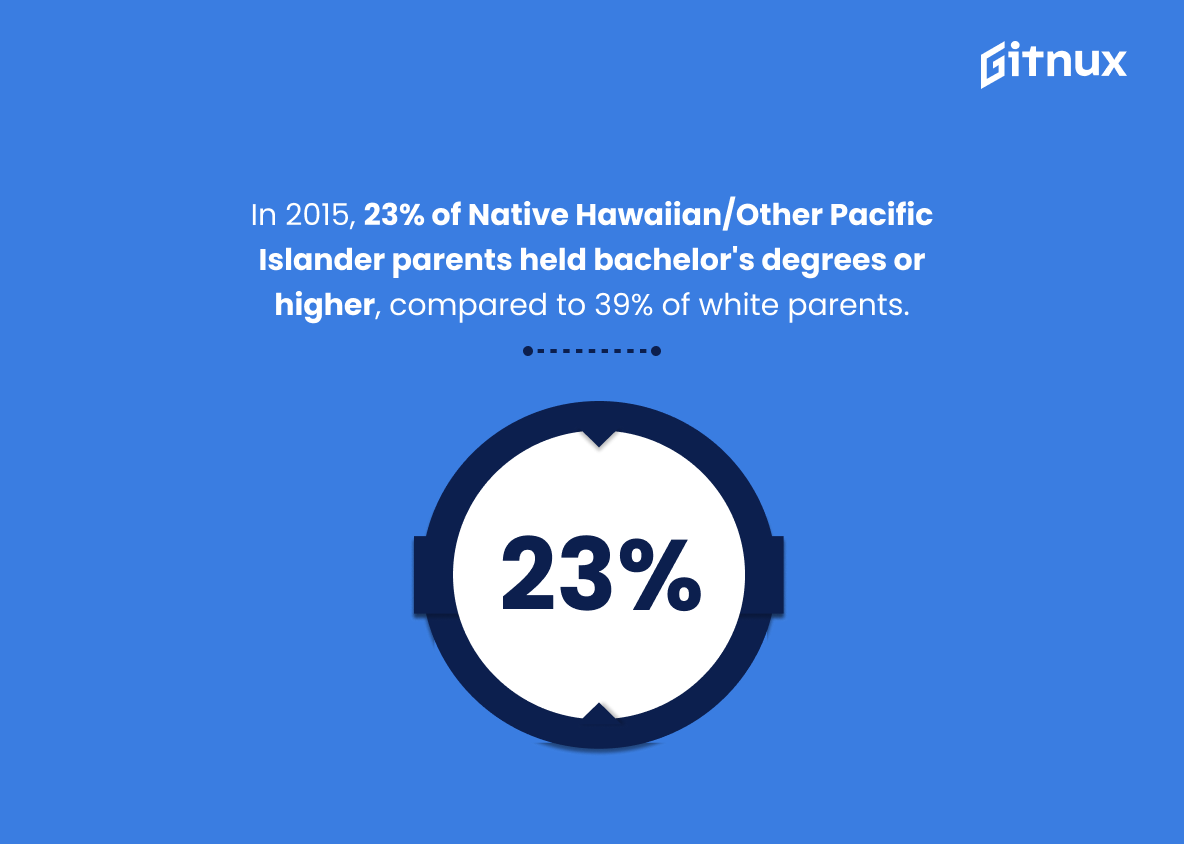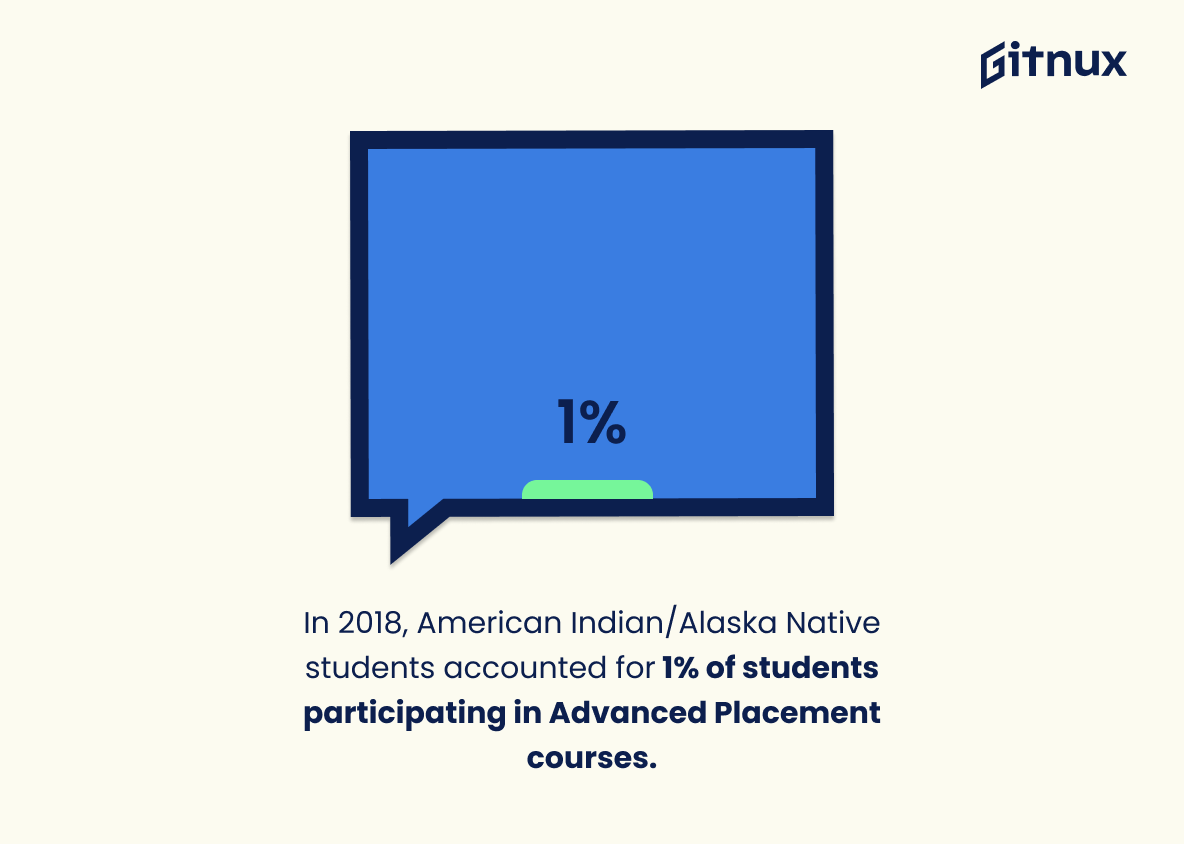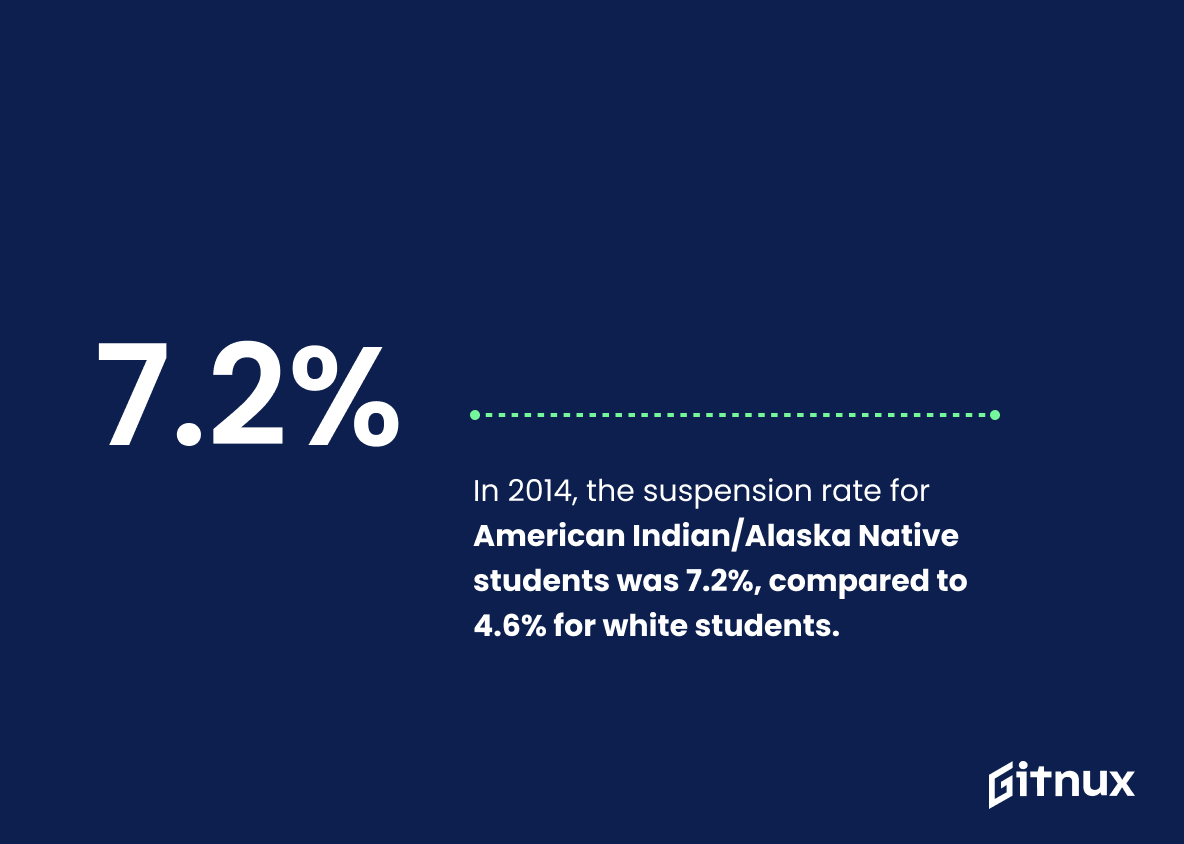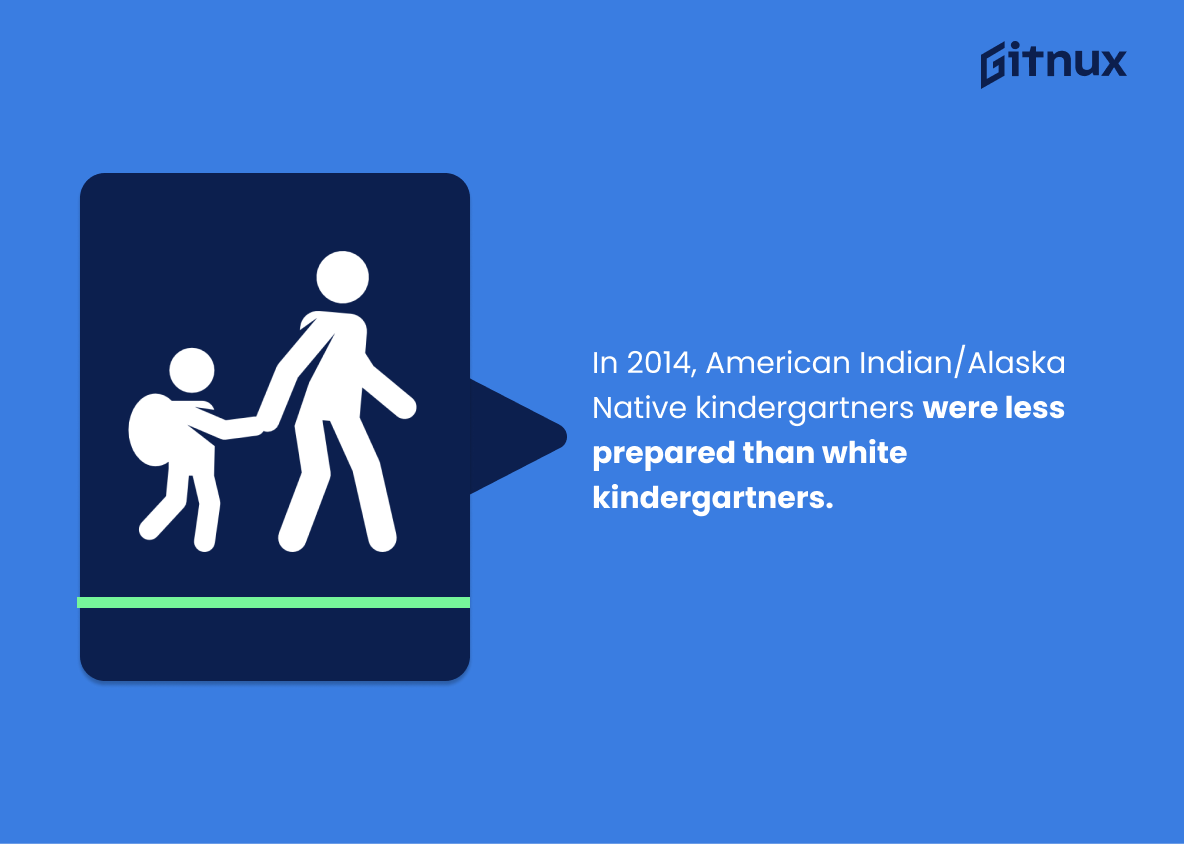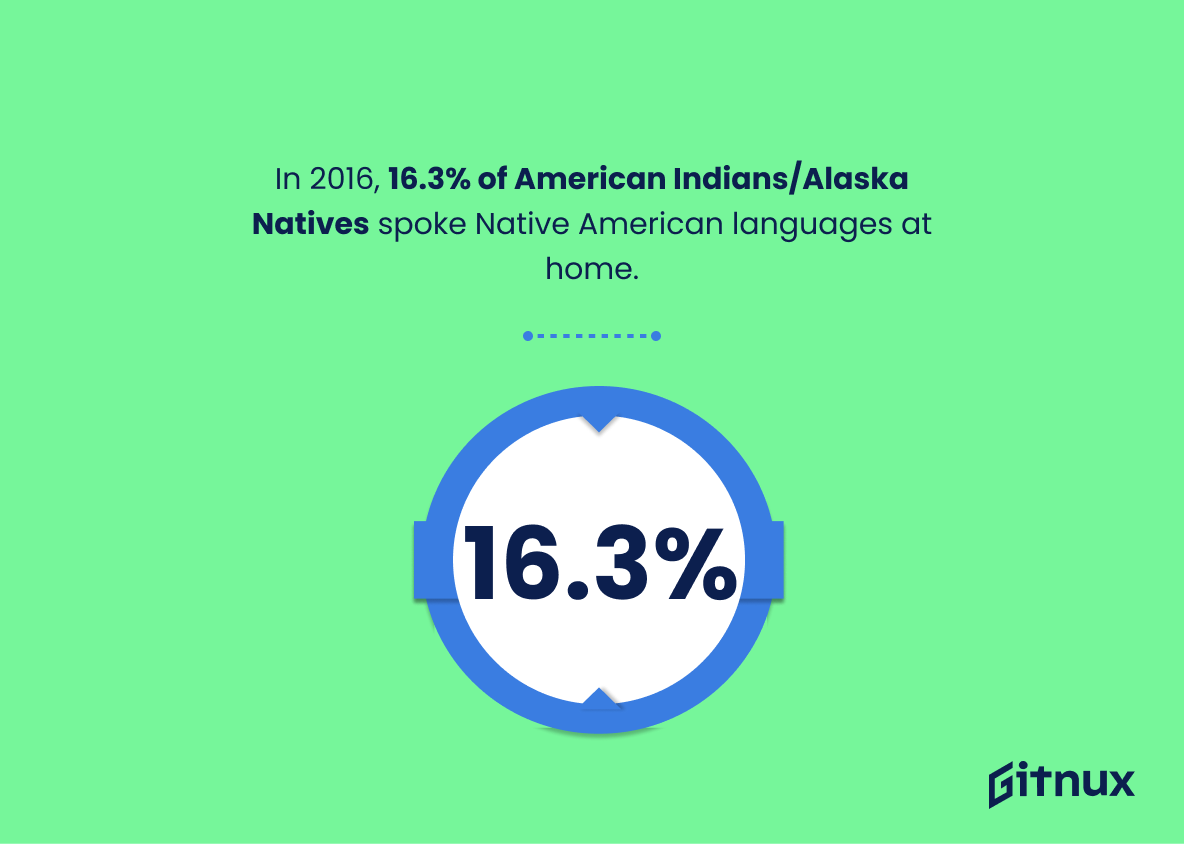American Indian/Alaska Native students have consistently faced educational disparities in the United States. From kindergarten to college, these students are often underrepresented and underserved when it comes to access to quality education. This blog post will explore some of the most recent statistics on American Indian/Alaska Native education, including graduation rates, proficiency levels in reading and math, digital divide issues, school enrollment numbers and more. We hope that by highlighting these facts we can help bring attention to this important issue so that steps can be taken towards closing the achievement gap for American Indians/Alaskan Natives across all grade levels.
This statistic is a stark reminder of the educational disparities that exist between American Indian/Alaska Native students and their peers. It highlights the need for increased resources and support for these students in order to ensure that they have access to the same educational opportunities as other racial/ethnic groups. It is a call to action to address the systemic issues that are preventing these students from achieving their full potential.
In 2019, only 53% of American Indian/Alaska Native students graduated high school within four years, compared to the national average of 85%.
This statistic is a stark reminder of the educational disparities that exist between American Indian/Alaska Native students and the national average. It highlights the need for greater investment in American Indian/Alaska Native education, as well as the need for more culturally-sensitive approaches to teaching and learning. It is a call to action for educators, administrators, and policy makers to ensure that all students have access to the same quality of education.
American Indian Education Statistics Overview
Just 43% of American Indian/Alaska Native kindergarten students attended full-day programs in 2017, compared to 75% of white students.
This statistic is a stark reminder of the disparities that exist in American Indian/Alaska Native education. It highlights the fact that only 43% of American Indian/Alaska Native kindergarten students had access to full-day programs in 2017, compared to 75% of white students. This discrepancy is indicative of the systemic inequalities that exist in the education system and the need for greater investment in American Indian/Alaska Native education.
About 8% of American Indian/Alaska Native individuals age 25 and older hold a bachelor’s degree, compared to 34% of the general population.
This statistic serves as a stark reminder of the educational disparities between American Indian/Alaska Native individuals and the general population. With only 8% of American Indian/Alaska Native individuals holding a bachelor’s degree, compared to 34% of the general population, it is clear that there is a need for greater access to higher education opportunities for this population.
In 2018, only 19% of American Indian and Alaska Native students were proficient in fourth-grade math, compared to 47% of white students.
This statistic serves as a stark reminder of the educational disparities between American Indian and Alaska Native students and their white peers. It highlights the need for greater investment in American Indian and Alaska Native education, as well as the need for more effective strategies to close the achievement gap.
American Indian/Alaska Native students accounted for 2% of total enrollment in U.S. public schools in the 2019-2020 academic year.
This statistic is a powerful reminder of the underrepresentation of American Indian/Alaska Native students in U.S. public schools. Despite making up a significant portion of the population, these students are not receiving the same educational opportunities as their peers. This statistic serves as a call to action to ensure that all students, regardless of their background, have access to quality education.
The dropout rate for American Indian/Alaska Native students was 9.5% in 2018, the highest rate among all racial/ethnic groups.
This statistic is a stark reminder of the disparities that exist in American education. It highlights the fact that American Indian/Alaska Native students are facing a unique set of challenges that are preventing them from achieving educational success. This statistic is a call to action to address the systemic issues that are preventing these students from succeeding in school.
In 2017, only 17% of American Indian/Alaska Native students scored at or above the proficient level in eighth-grade reading.
This statistic is a stark reminder of the educational disparities that exist between American Indian/Alaska Native students and their peers. With only 17% of students scoring at or above the proficient level in eighth-grade reading, it is clear that there is a need for greater investment in American Indian/Alaska Native education. This statistic serves as a call to action to ensure that all students have access to the resources and support they need to succeed.
The National Indian Education Association has reported that American Indian/Alaska Native students face a digital divide, with only 65% having access to the internet at home.
This statistic is a stark reminder of the disparities that exist in American Indian/Alaska Native communities when it comes to access to the internet. With only 65% of students having access to the internet at home, it is clear that many students are being left behind in terms of having access to the same educational opportunities as their peers. This digital divide has the potential to create a significant barrier to educational success for these students, as they may not have access to the same resources and information as their peers. This statistic is an important reminder of the need to ensure that all students have access to the same educational opportunities, regardless of their background.
In 2019, 28% of American Indian/Alaska Native students attended rural schools, compared to 13% of white students.
This statistic is a stark reminder of the disparities in educational opportunities between American Indian/Alaska Native students and white students. It highlights the fact that American Indian/Alaska Native students are more likely to attend rural schools, which often lack the resources and support needed to ensure a quality education. This statistic is a call to action to address the systemic inequalities that exist in our education system and to ensure that all students have access to the same educational opportunities.
The Bureau of Indian Education-funded schools had an average four-year graduation rate of 53% in 2019, compared to the national average of 85%.
This statistic is a stark reminder of the educational disparities that exist between American Indian students and their peers. It highlights the need for increased investment in American Indian education, as well as the implementation of more effective strategies to ensure that these students have access to the same quality of education as their peers.
In 2015, about 23% of Native Hawaiian or Other Pacific Islander parents had a bachelor’s degree or higher, compared to 39% of white parents.
This statistic is a stark reminder of the educational disparities that exist between Native Hawaiian or Other Pacific Islander parents and white parents. It highlights the need for increased access to educational opportunities for Native Hawaiian or Other Pacific Islander parents, as well as other American Indian communities, in order to close the educational gap.
Approximately 21% of American Indian/Alaska Native students had a disability in 2019, compared to 14% of white students.
This statistic is a stark reminder of the disparities that exist in the educational opportunities available to American Indian/Alaska Native students compared to white students. It highlights the need for greater investment in resources and support for American Indian/Alaska Native students to ensure they have the same access to educational opportunities as their white peers.
In 2018, American Indian/Alaska Native students accounted for 1% of students participating in Advanced Placement courses.
This statistic is a stark reminder of the disparities that exist in American Indian/Alaska Native education. Despite making up a significant portion of the population, only 1% of students participating in Advanced Placement courses are American Indian/Alaska Native. This statistic highlights the need for increased access to higher education opportunities for American Indian/Alaska Native students.
In 2014, the suspension rate for American Indian/Alaska Native students was 7.2%, compared to 4.6% for white students.
This statistic is a stark reminder of the disparities that exist in the education system for American Indian/Alaska Native students. It highlights the fact that these students are more likely to face suspension than their white counterparts, indicating that there is a need for greater attention to be paid to the educational needs of this population.
In 2014, 47% of American Indian/Alaska Native kindergartners were prepared to recognize letters and 30% could count to 20 or above, compared to 68% and 44% of white kindergartners, respectively.
This statistic serves as a stark reminder of the educational disparities between American Indian/Alaska Native and white kindergartners. It highlights the need for greater investment in early childhood education for American Indian/Alaska Native children, as well as the need for more equitable access to educational resources.
Native American languages were spoken at home by 16.3% of American Indian/Alaska Native alone or in combination with another race in 2016.
This statistic is a powerful reminder of the importance of preserving and promoting Native American languages. It highlights the fact that, despite the challenges of assimilation, many American Indians and Alaska Natives are still speaking their native languages at home. This is a testament to the strength of their cultural identity and the importance of language in their lives. It also serves as a reminder that Native American languages are an integral part of the American cultural landscape and should be supported and celebrated.
Only 15% of American Indian/Alaska Native adults completed a bachelor’s degree or higher in 2014-2018, compared to 32% of the general population.
This statistic serves as a stark reminder of the educational disparities that exist between American Indian/Alaska Native adults and the general population. It highlights the need for increased access to higher education opportunities for American Indian/Alaska Native adults, as well as the need for greater investment in educational resources for this population.
In 2014, 24% of American Indian/Alaska Native students experienced bullying or harassment, compared to 18% of white students.
This statistic is a stark reminder of the disparities that exist in the educational experiences of American Indian/Alaska Native students and white students. It highlights the fact that American Indian/Alaska Native students are more likely to experience bullying or harassment than their white peers, and that this is an issue that needs to be addressed.
Conclusion
The statistics presented in this blog post demonstrate the disparities between American Indian/Alaska Native students and their white peers when it comes to educational attainment. From kindergarten through college, AIAN students face a number of challenges that hinder their academic success, including lower access to full-day programs, digital divide issues, higher dropout rates and suspension rates than other racial/ethnic groups.
These data points illustrate the need for increased investment in resources such as early childhood education opportunities and technology infrastructure so that all children have an equal chance at achieving academic excellence.
References
0. – https://www.www.gao.gov
1. – https://www.nces.ed.gov
2. – https://www.www.equityalliancemn.org
3. – https://www.www.census.gov
4. – https://www.www.ncai.org
5. – https://www.www2.ed.gov
6. – https://www.www.bie.edu
7. – https://www.www.childtrends.org
8. – https://www.www.niea.org
